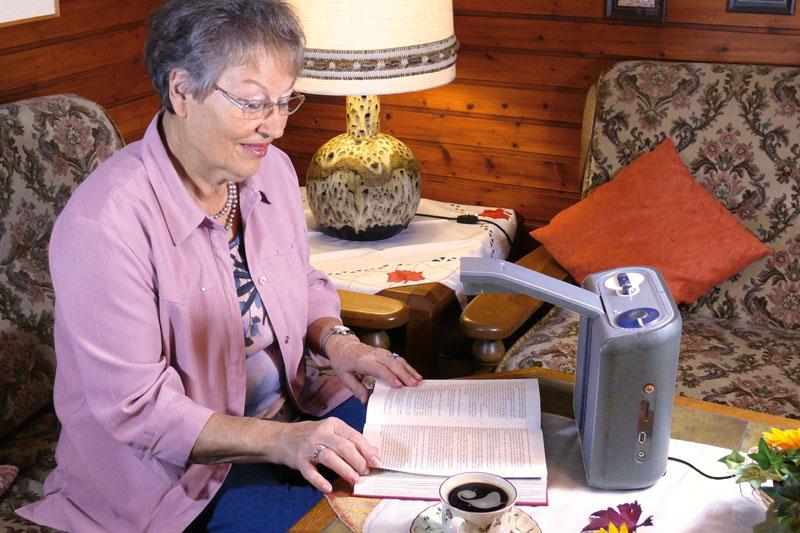Optelec ClearReader+ Basic with 59 High Quality Voices - 31 Languages
Optelec ClearReader+ Basic with 59 High Quality Voices - 31 Languages
Share
SKU:CR-BA-NB-G2-US-13M
15 in stock
Couldn't load pickup availability
We accept


Would you like your daily newspaper or favorite book to be read aloud by naturally sounding voices within a matter of seconds? Are you searching for a stylish device that scans and reads printed documents just at the press of a button? The Optelec ClearReader+ Basic comes with 59 High Quality male or female Voices in 31 Languages!
Instant Reading
Rediscover the joy of reading anytime and anywhere. Within a few seconds, listen to any printed document scanned by the ClearReader+ Basic with just one click. When it works so easily and quickly, why would you trouble yourself with saving and opening documents?
Intuitive Operation
The ClearReader+ Basic is designed for simplicity. It has easy to operate buttons with distinctive forms, so you can easily distinguish and use them.
Switching Between Languages
With the ClearReader+ Basic you can choose between 59 available high-quality, naturally sounding male and female voices in 31 different languages to read text alound. By using the easy to operate buttons, you can match the language of your document with that of your unit easily.
The ClearReader+ Basic does not integrate a battery. If you are looking for a portable scan and read device to use anywhere in your home, click here to go to the product page of the ClearReader+.
Specifications
- High resolution camera with state of the art wide angle optics
- Fast text recognition (OCR)
- 59 high quality reading voices (TTS)
- 31 supported languages
- Built-in stereo speakers
- Volume control
- Speed control
- Headphone connector
- HDMI port
- Integrated LED lighting for even illumination
- Foldable carrying handle
- Dimensions: 23 x 24 x 10 cm / 9.1 x 9.4 x 3.9 in
- Weight: 2.26 kg / 5 lb
- 2-year standard warranty
Downloads
Find the available downloads for this product here:
- Optelec ClearReader+ Basic User Manual 2.8 (PDF)
- Optelec ClearReader+ Basic User Manual 2.8 (Word)
- Audio User Manual - Track 1: Introduction
- Audio User Manual - Track 2: Getting to know your ClearReader+ Basic
- Audio User Manual - Track 3: Getting Started
- Audio User Manual - Track 4: Reading Languages and Voices
- Audio User Manual - Track 5: The Magnification Feature Pack
- Audio User Manual - Track 6: The ClearReader+ Basic Menu
- Audio User Manual - Track 7: Power and Battery Use
- Audio User Manual - Track 8: Troubleshooting
- Audio User Manual - Track 9: Safety and Technical Information


